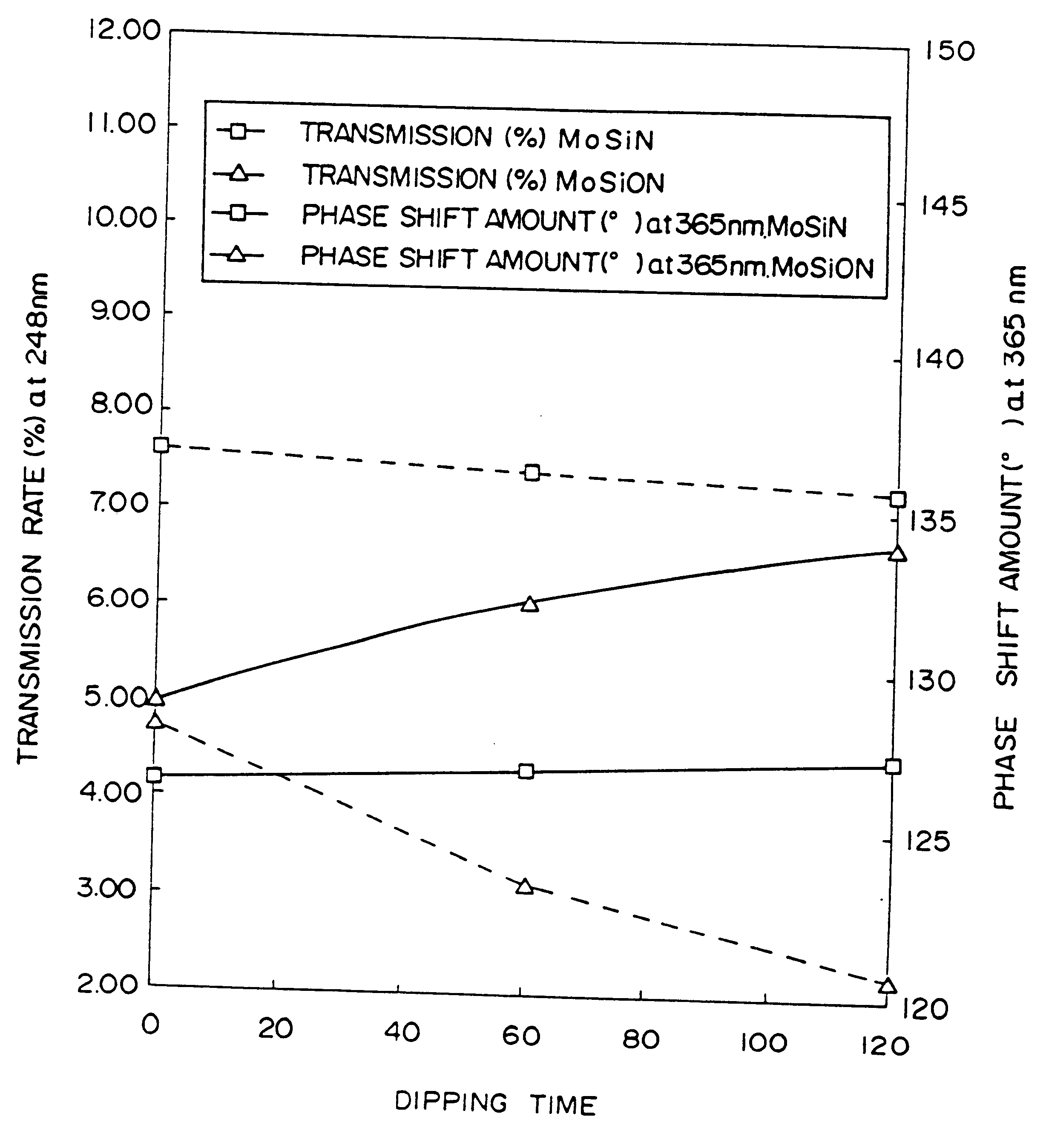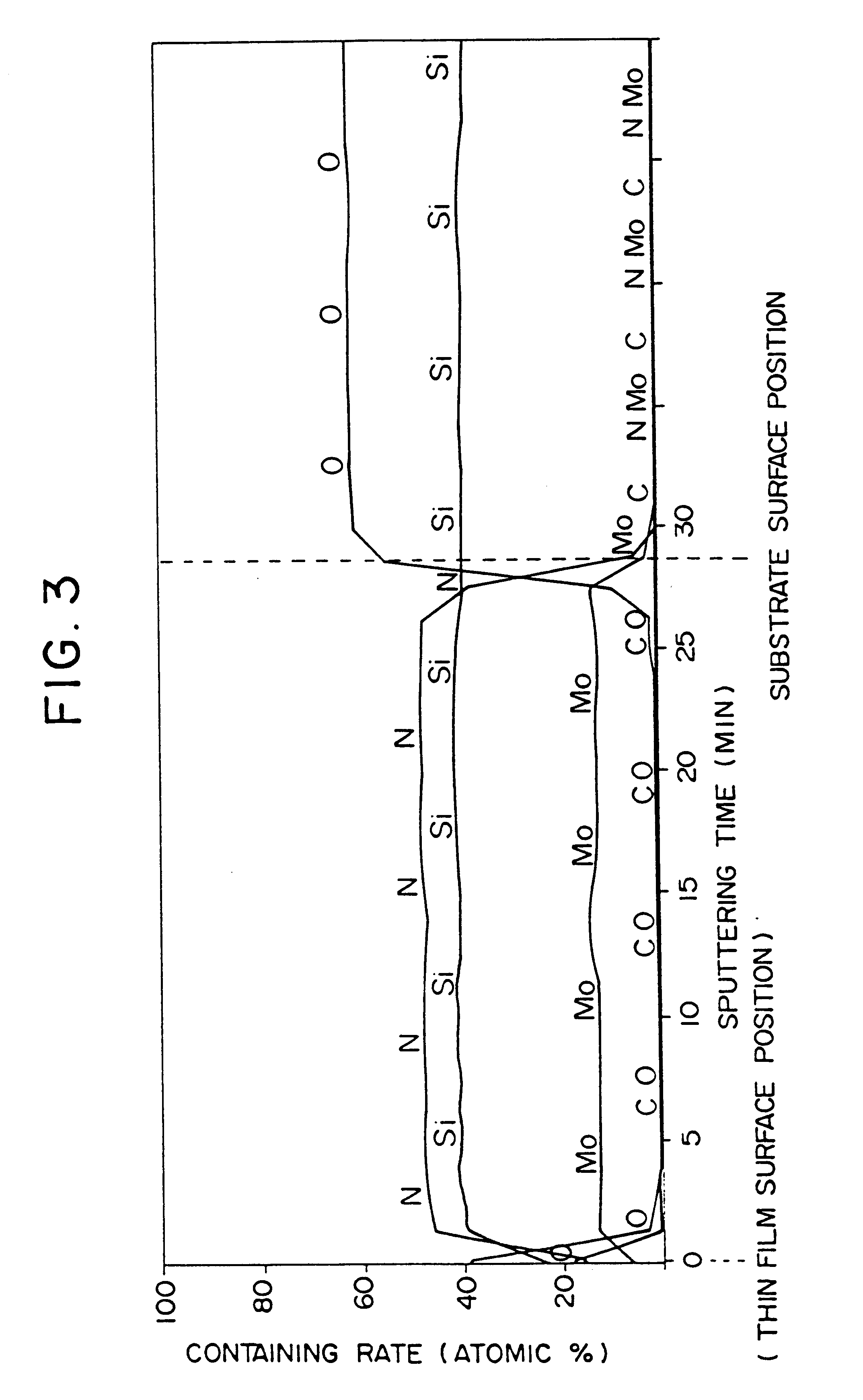Phase shift mask and phase shift mask blank
a phase shift mask and mask blank technology, applied in the field of phase shift masks, can solve the problems of unstable electrical discharge of film, deviation of transmission rate and phase shift amount thus set, and inability to improve the practical resolution of lithography, etc., and achieve good film characteristics such as acid resistance and photo resistan
- Summary
- Abstract
- Description
- Claims
- Application Information
AI Technical Summary
Benefits of technology
Problems solved by technology
Method used
Image
Examples
Embodiment Construction
Fabrication of Blank
A light translucent film made of a molybdenum silicon nitride oxide (MoSiON) thin film was formed on a surface of a transparent substrate; this was for a phase shift mask blank for I-line (wavelength 365 nanometers). More specifically, a phase shift mask blank and a phase shift mask were obtained in the same manner as Embodiments No. 5 to 7 except that using a mixing target (Mo:Si=33:67 mol %) of molybdenum (Mo) and silicon (Si), a molybdenum silicon nitride oxide (MoSiON) thin film was formed on the transparent substrate by reactive sputtering in a mixture gas atmosphere [(Comparative Example No. 3, Ar 86%, N.sub.2 O 14%, pressure 1.5.times.10.sup.-6 Torr), (Comparative Example No. 4, Ar 85%, N.sub.2 O 14%, pressure 1.5.times.10.sup.-3 Torr), (Comparative Example No. 5, Ar 83%, N.sub.2 O 17%, pressure 1.5.times.10.sup.-6 Torr) of Argon (Ar) and nitrogen (N.sub.2). FIG. 8 shows the film composition and film characteristics.
Evaluation
Film composition and film char...
PUM
| Property | Measurement | Unit |
|---|---|---|
| wavelength | aaaaa | aaaaa |
| transparent | aaaaa | aaaaa |
| thickness | aaaaa | aaaaa |
Abstract
Description
Claims
Application Information
 Login to View More
Login to View More - R&D
- Intellectual Property
- Life Sciences
- Materials
- Tech Scout
- Unparalleled Data Quality
- Higher Quality Content
- 60% Fewer Hallucinations
Browse by: Latest US Patents, China's latest patents, Technical Efficacy Thesaurus, Application Domain, Technology Topic, Popular Technical Reports.
© 2025 PatSnap. All rights reserved.Legal|Privacy policy|Modern Slavery Act Transparency Statement|Sitemap|About US| Contact US: help@patsnap.com



